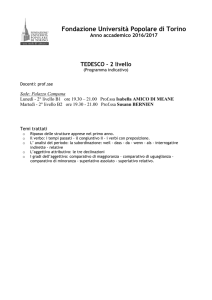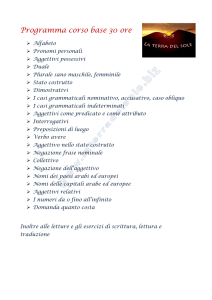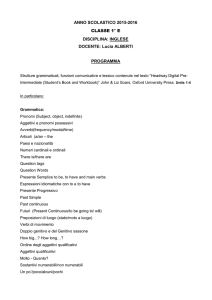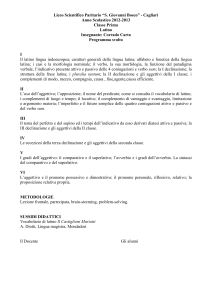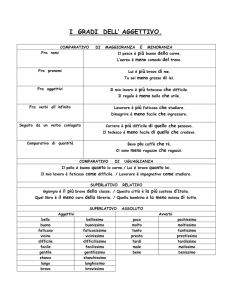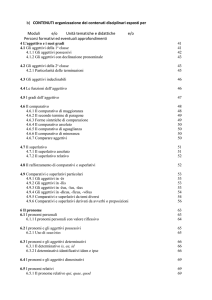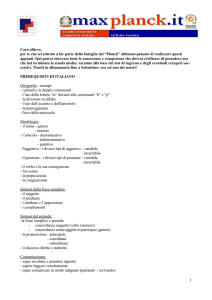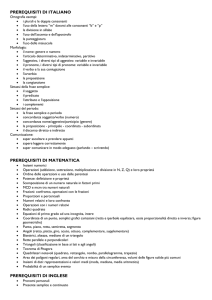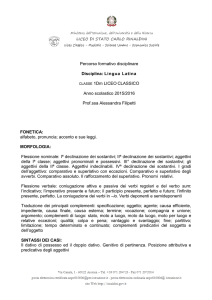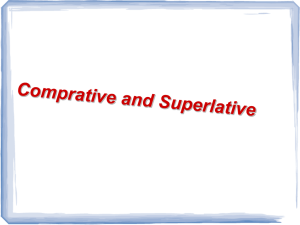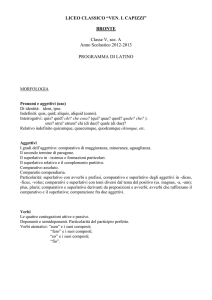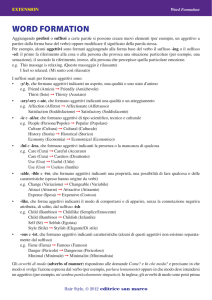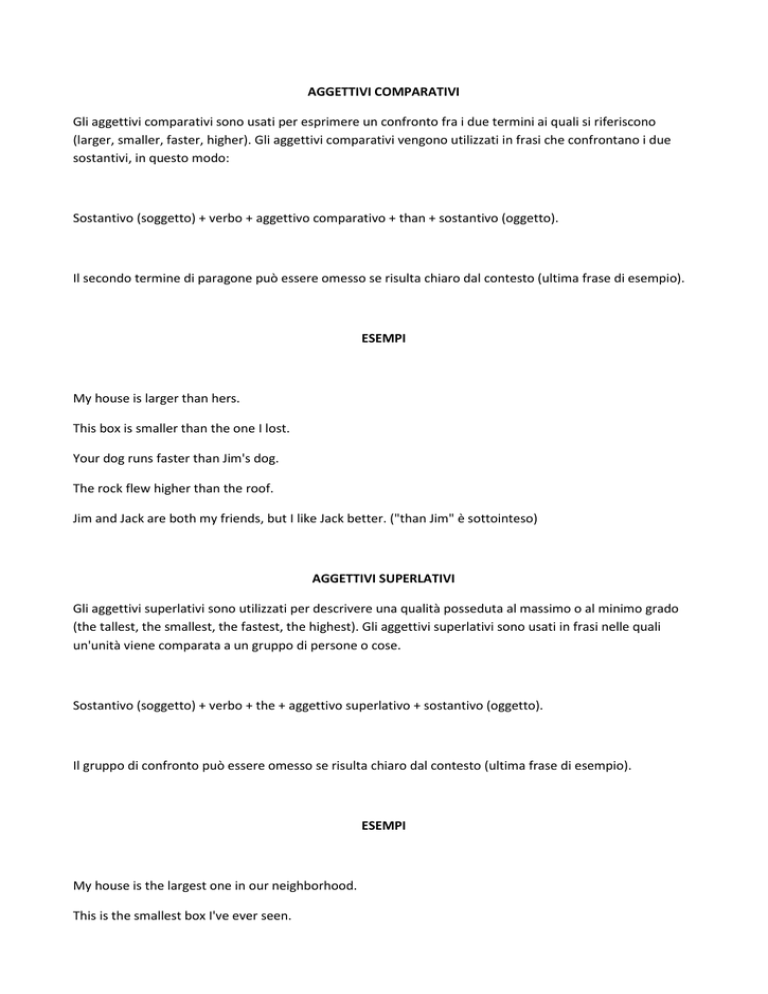
AGGETTIVI COMPARATIVI
Gli aggettivi comparativi sono usati per esprimere un confronto fra i due termini ai quali si riferiscono
(larger, smaller, faster, higher). Gli aggettivi comparativi vengono utilizzati in frasi che confrontano i due
sostantivi, in questo modo:
Sostantivo (soggetto) + verbo + aggettivo comparativo + than + sostantivo (oggetto).
Il secondo termine di paragone può essere omesso se risulta chiaro dal contesto (ultima frase di esempio).
ESEMPI
My house is larger than hers.
This box is smaller than the one I lost.
Your dog runs faster than Jim's dog.
The rock flew higher than the roof.
Jim and Jack are both my friends, but I like Jack better. ("than Jim" è sottointeso)
AGGETTIVI SUPERLATIVI
Gli aggettivi superlativi sono utilizzati per descrivere una qualità posseduta al massimo o al minimo grado
(the tallest, the smallest, the fastest, the highest). Gli aggettivi superlativi sono usati in frasi nelle quali
un'unità viene comparata a un gruppo di persone o cose.
Sostantivo (soggetto) + verbo + the + aggettivo superlativo + sostantivo (oggetto).
Il gruppo di confronto può essere omesso se risulta chiaro dal contesto (ultima frase di esempio).
ESEMPI
My house is the largest one in our neighborhood.
This is the smallest box I've ever seen.
Your dog ran the fastest of any dog in the race.
We all threw our rocks at the same time. My rock flew the highest. ("of all the rocks" è sottinteso)
COME FORMARE I COMPARATIVI E I SUPERLATIVI REGOLARI
Formare i comparativi e i superlativi è facile. La forma dipende dal numero di sillabe dell'aggettivo originale.
AGGETTIVI A UNA SILLABA
Aggiungere -er per il comparativo e -est per il superlativo. Se l'aggettivo presenta una consonante + vocale
singola + consonante, si deve raddoppiare la consonante finale prima di aggiungere il suffisso.
Aggettivo
tall
fat
big
sad
Comparativo
taller
fatter
bigger
sadder
Superlativo
tallest
fattest
biggest
saddest
DUE SILLABE
Gli aggettivi con due sillabe possono formare il comparativo aggiungendo -er oppure anteponendo more
all'aggettivo. Questi aggettivi formano il superlativo aggiungendo -est oppure anteponendo most
all'aggettivo. In molti casi, è possibile utilizzare entrambe le forme, anche se una forma è più comune
dell'altra. In caso di dubbi se un aggettivo a due sillabe può prendere il suffisso comparativo o il suffisso
superlativo, andate sul sicuro e usate more and most. Gli aggettivi che terminano per y cambiano la y in i
prima del suffisso.
Aggettivo
happy
simple
busy
Comparativo
happier
simpler
busier
Superlativo
happiest
simplest
busiest
TRE O PIÙ SILLABE
Gli aggettivi con tre o più sillabe formano il comparativo anteponendo more all'aggettivo e formano il
superlativo anteponendo most.
important
more important
most important
expensive
more expensive
most expensive
COMPARATIVI E SUPERLATIVI IRREGOLARI
Le forme di questi aggettivi molto utilizzati sono completamente irregolari.
good
better best
bad
worse worst
little
less
much more
far
least
most
further / farther
furthest / farthest
ESEMPI
Today is the worst day I've had in a long time.
You play tennis better than I do.
This is the least expensive sweater in the store.
This sweater is less expensive than that one.

